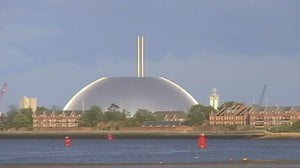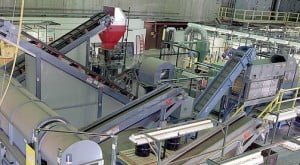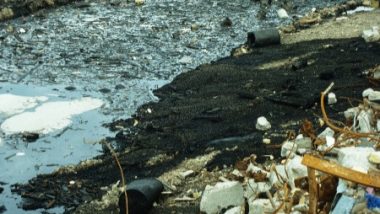Recent Developments in UK Residual Waste Treatment rules originate from the EU Landfill Directive and also the rWDF Drivers
The current relatively high levels of development, and investment activity in Residual Waste Treatment of Municipal Solid Waste all started when the EU Landfill Directive (LD) was implemented at the end of the last century.

The Landfill Directive set technical standards for landfill development, and also through regulations that followed, set targets which most importantly for residual waste treatment, included targets for recycling and diversion of wastes away from landfill. As from the middle of the first decade of the 21st century, all waste to landfill has had to be treated in some way. This is the requirement in all European Union countries, even if only to start with “treatment” comprised of no more than the residual solid waste being sorted further to remove a targeted proportion of the refuse material, or, for example, dried within an MBT Plant.
At first, when the new regulations were implemented the driver for waste pre-treatment was largely just the requirement for regulatory compliance, however, the UK government having introduced the landfill tax, year by year continued to raise the cost of the tax charged. That has happened continuously and currently amounts to almost £60/tonne (in 2011), and this price will continue to rise annually in the near future.
This means that to reduce cost, waste producers now must seek to minimise waste, re-use, and recycle in order to avoid the high cost of the landfill tax, landfill is now more expensive than the recycling alternatives in almost all cases and as a result annual waste volumes to UK landfills (which has been rising by as much as 3% per year) are dropping, as waste minimization, re-use, and recycling become an economic imperative for the creators of the waste, both municipal and commercial and industrial.
At the same time, the UK government just like many others wish to encourage renewable energy creation from waste, and has been introducing incentives otherwise known as Residual Waste Derived Fuel (rWDF) drivers, such as the “ROCS scheme” which came first, and the “Feed-in-tariff” which started in its current form with a 20-year guarantee for individual projects, in 2010 in order to encourage incineration and other technologies through which energy from waste can be generated.
National Waste Strategies & Action Plans
Nationwide throughout the UK, there have been activities within local councils in which they have developed waste strategies and “Action Plans”, through which to implement the construction of the new infrastructure essential to achieving the EU waste Diversion Targets.
The intention of this planning is to ensure an orderly progression in the UK from no waste pre-treatment, to increasingly sophisticated use of MRFs and new waste treatment technologies.
Within this framework, it was always foreseen that some local authorities would be early adopters while others would prefer to do less and contribute to the national effort more than others by financial contribution, than others who will lead with the adoption of new waste infrastructure ahead of other districts.
In the UK the solution has been the introduction of an internal market, within which those local authorities with excess can sell their nominal excess recycling/ landfill diversion capacity to the poorer performing councils, within a local authority market system for the sale of landfill waste diversion credits.
The action plans have now mostly been acted upon and many have advanced to become construction contracts within integrated waste management projects, flowing from the UK government's Waste Improvement Planning of the mid-decade through which a wide range of divergent solutions have been achieved. It was always clear that no one waste technology solution would suit all areas, but the variety of waste solutions now being implemented throughout the UK is surely wider in its scope and variety than anyone could have considered possible when the process began.
WIDP, “New Tech” and Partnership & Efficiency Programmes

Such widely varying technologies and contract arrangements as have now become real projects on the ground have in many cases been nurtured by yet more government initiatives in part stemming from the WIDP (Waste Improvement Development Planning of Defra which subsidized “new tech” providers (often through WRAP) to demonstrate the viability of their (at that time) largely theoretical and unproven waste treatment processes, and these have been implemented through partnerships backed up by efficiency improvement programmes.
Protocols and Regulatory Practice
During this time the methods used have been developed and disseminated by a variety of protocols designed to help the industry players to adopt required regulatory practices. Through the definition of problems and the creation of newly recognized waste management and control methods, the interpretation of regulatory requirements has been transmitted to the ground floor where many of the necessary actions have now largely been undertaken
Planning Reform and Localism
However, many projects are being delayed and even cancelled due to delays and rejections during the local authority planning permission process, and the Conservative's plans to encourage what they call “localism” in the development planning system, are expected to have very negative impacts on the ability for the promoters of many waste treatment technologies, to actually gain planning permission and get their work underway.
Lifetime Carbon Assessments

The calculation of carbon footprints and lifetime carbon emissions assessments is also a powerful new science that is emerging, in part, from the waste industry's need to compare carbon consumption use for the full life-cycle of factors from a wide range of pre-treatment technologies. The driver for this is to show that the techniques used for sustainable waste management are genuinely reducing climate-changing carbon emissions, and the (WRAP created) WRATE modeling software is the tool used for calculating Lifetime Carbon Usage.
Carbon Metrics and NI Reporting
This will need to be followed by “carbon metrics” and continual NI reporting to ensure that the waste industry meets all of its carbon emission reduction targets.
Conclusion
So, as our readers will hopefully now realise, this all adds up to a huge change within the UK Waste Management Industry, which has changed its very nature. A lot of work has been needed, involving many changes for those within the waste management industry, which makes the Waste Management Industry a fascinating and highly rewarding area to work in, with its many new and highly innovative ideas and great scope for personal career development.
Indeed these developments in Waste management have been instrumental in the generation of secure employment for many people, with the following aims now, at least being realised:
1. Large quantities of waste are being recycled, meaning that the UK no longer needs to continue forever despoiling the land with landfills.
2. Genuinely profitable and reasonably stable markets in recycled products are becoming established which will in time perpetuate recycling and bring certain returns from investment through which the efficiency of recycling will continue to improve.
3. The public, and our politicians, having seen what has been happening, want yet more of the same, and new policies for “zero waste”, meaning to as far as possible in the future send zero waste to landfills.
4. To achieve this the waste management industry has, and is still now, developing new concepts that will affect the way in which the products of the future will be designed and manufactured with sustainable closed-loop recycling requiring minimal use of raw materials. As a result, the very idea of “Waste Management” will disappear, and be replaced by “sustainable resource management”. As the availability of raw materials diminishes society will use less and less of them, and the environment will be preserved for future generations.



